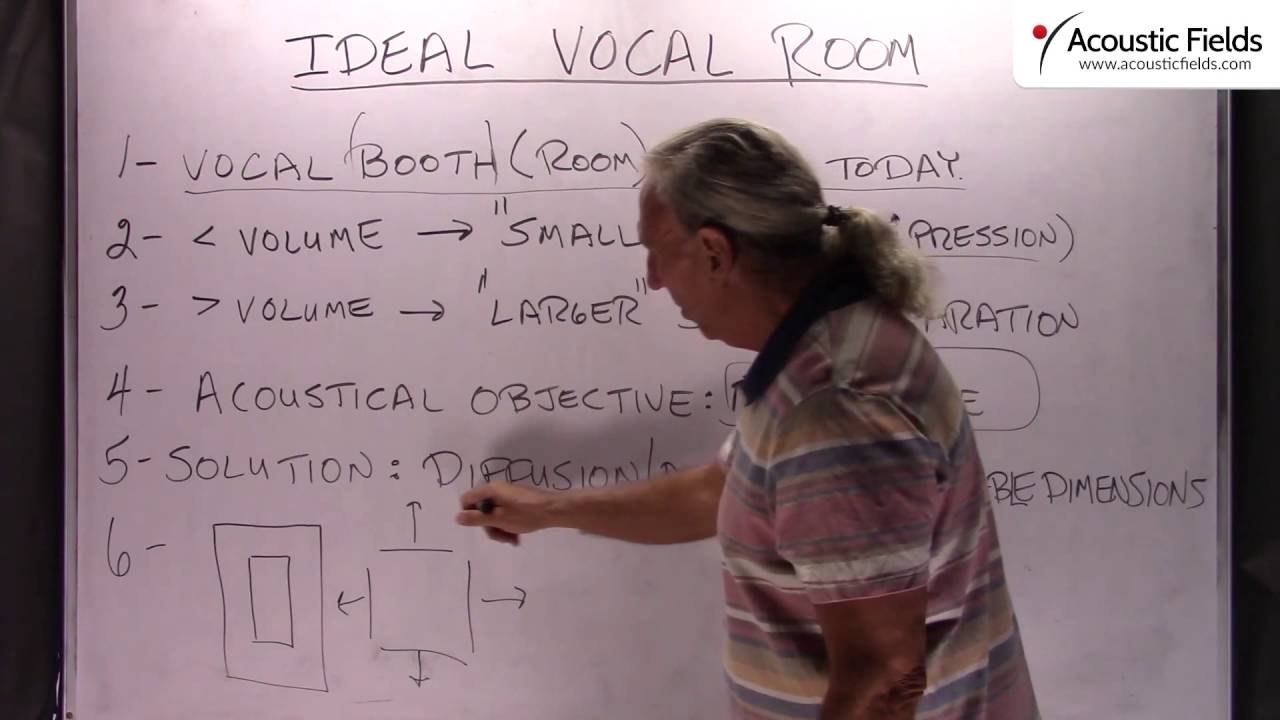Today we’re going to talk about an ideal vocal room. I know it’s a little bit dangerous to use such terms as ideal but I think this discussion will give you something to think about when it comes to vocal booths in rooms because I kind of see them as a last resort a lot of times in studios and they don’t get the proper care and consideration that they really need in terms of acoustical treatment, size, volume.
But let’s talk about our vocal booth or really a vocal room today is what we should call. Booth kind of has that small room feel so we try to stay away from that. But if you hear the vocals of today, music, voice it does really matter. They’re really small sounding, they’re very – I don’t know, compressed I guess if you want to use an electronic paradigm in signal processing. But they just sound so claustrophobic. I think is the word that I’m trying to use and obviously something we need to get away from.
So small volume, small rooms produce that small sound and I think my inability to explain it but I think you all get what I mean. And of course we want a fuller sound, a larger sound with our vocals because our vocals are where we connect to the music emotionally. So you know, the bottom line is here we have to hear everything in that vocal. We have to hear what the singer had for breakfast, if you want to get comical about it.
But the bottom line here is you know, we need to hear more than what we’re hearing today. I’m so disappointed in the recordings I hear today, even Adele, I mean a great voice but they process her to death in her vocal.
So let’s step back a little bit and think about what the objective is here and what we’re trying to accomplish. So obviously music and voice are completely different paradigms and require completely different treatments. But the goal and the use of getting a larger sound like we talked about in #3 is to use a combination of diffusion and absorption. Right diffusion sequence, right frequency response, right position in the room.
And the whole key to this treatment paradigm is to make it variable. So you put it on casters, you make it portable, you’re going to be using different microphones sometimes, you need the ability to move it around within the room and then learn how the room and the microphone interact. And then you can create some pretty great sounds. And then there are examples of them on our website.
Now, for the room and the dimensions of the room, what would an ideal vocal room be? Well, we know from our discussion up here that small rooms and larger rooms sound completely different. So how about a vocal room that had the ability to vary itself? Wouldn’t be great if you could push a button and make it a little bit larger, make the ceiling a little bit higher, make the rear walls a little bit longer?
So some kind of variable treatment here depending on what you are accomplishing and then on the inside of the room to have the flexibility and treatment between absorption and diffusion. So definitely an ideal situation, definitely an ideal scenario to have. Now granted, we probably can’t get the variable room situation, the variable walls although you could build that. The bottom line here is you definitely can use the treatment, absorption and diffusion on the inside to get away from that small box sound that we’re saying today.







